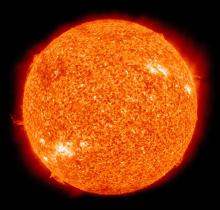Listen to today's episode of StarDate on the web the same day it airs in high-quality streaming audio without any extra ads or announcements. Choose a $8 one-month pass, or listen every day for a year for just $30.
You are here
Fornax
Almost a century ago, astronomers partitioned the celestial sphere into 88 constellations. Most of them — the famous ones — date from ancient times. But 14 of them — none of which is famous — were created by a single man, in the 18th century.
Nicolas Louis de la Caille was a French astronomer. In 1751, he set up an observatory at the Cape of Good Hope in South Africa to study the stars of the southern hemisphere. Over the following year, he cataloged about 10,000 stars. And later, he used those stars to draw new constellations in regions of the sky that weren’t visible from most of Europe.
He called one of them Mons Mensa — table mountain. It honored a feature near la Caille’s observatory. He named all the others for tools that had scientific uses, such as the telescope and microscope, or artistic uses, such as the painter’s easel.
One of those constellations is Fornax, the furnace, which is quite low in the south as night falls right now.
It was originally called Fornax Chemica, after a small heater that was used for chemistry experiments. Another astronomer shortened the name a few decades later.
Fornax isn’t much to look at — at least not with the eye alone. It contains only one modestly bright star, Alpha Fornacis, which we’ll talk about tomorrow. But a telescope reveals many treasures within its borders, including some beautiful individual galaxies, plus a giant cluster of galaxies — fiery visions in the celestial furnace.
Script by Damond Benningfield





